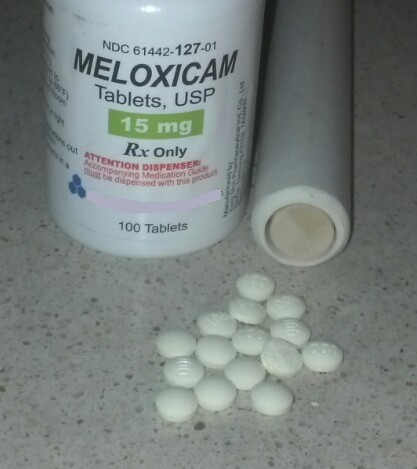
Dee Griffin, UNL-Great Plains Veterinary Educational Center (DGriffin2@UNL.EDU) and Richard Randle, Nebraska Extension Beef Veterinarian (RRandle2@UNL.EDU)
Dehorning and castration of calves intended for beef production are common management practices performed in the U.S. A variety of methods are available to perform these procedures and each has both positive and negative benefits. However, all methods of dehorning and castration result in some level of pain and distress on the animal. Public concern about the welfare of farm animals has led to interest in pain caused by routine husbandry practices, and has stimulated research into better understanding pain in livestock and how best to alleviate it.
Meloxicam is an NSAID (Nonsteroidal Anti-Inflammatory Drug) that has been shown to be effective in alleviating pain and distress following both dehorning and castration. Meloxicam has several advantages over other methods of pain management investigated, including longer period of pain relief with a single dose, ease of administration, and cost. While not approved specifically for alleviation of pain in livestock, your veterinarian may prescribe Meloxicam to alleviate pain and stress and enhance animal well-being following dehorning and castration.
The following outlines the use and administration of Meloxicam:
Post-Surgery Pain Management
● Meloxicam is the medication of choice
- It has a 27 hour half-life compared to other potential medications that only last minutes.
- It is a prescription medication, so you will need to visit with your veterinarian.
- The cost will likely be less than a dollar for your calves at branding.
- The FDA asks your veterinarian to assign the withdrawal time, but generally, 21 days is considered appropriate.
● Meloxicam comes in 15 mg tablets. They are slightly smaller than an aspirin.
● The meloxicam cattle dosage is 45 mg / CWT or 3 x 15mg tablets per 100 pounds
Meloxicam Tablet Dosing Device (photo http://go.unl.edu/9n8v)
Supplies needed:
● PEX ½”water pipe, a five foot section will make three 15” dosing devices for young calves.
● Wooden dowel rod, 1/2” diameter. A four foot rod makes three 15” plungers for calf dosing devices.
● PEX ¾”water pipe, a five foot section will make three 20” dosing devices weaning calves.
● Wooden dowel rod, 5/8” diameter. A four foot rod makes two 20” plungers for weanling devices.
● Small opening metal washers and ½” inch screws to fasten the washer to the dowel rod plunger.
● Short lengths of nylon cord or twine to attach between the metal washer and taped to the PEX tubing.
- Attaching the dowel to the PEX keeps the plunger from sliding out and allows the plunger to be retracted sufficiently so that the tablets slide far back into the doser, thus helping prevent the tablets from sliding out before the doser is properly placed in the calf’s mouth.
● Assemble and smooth ends of PEX pipe and dowel rod